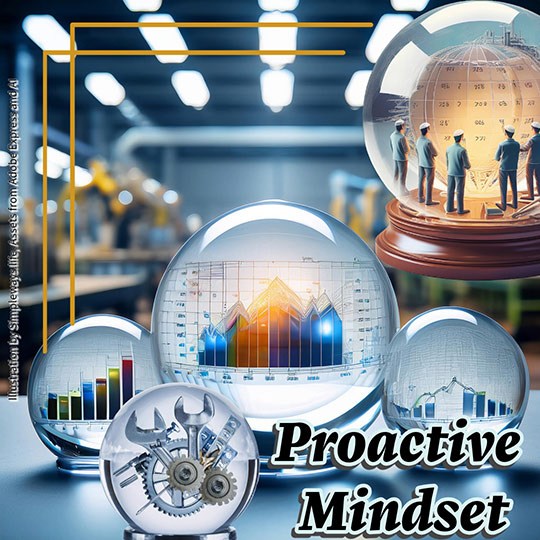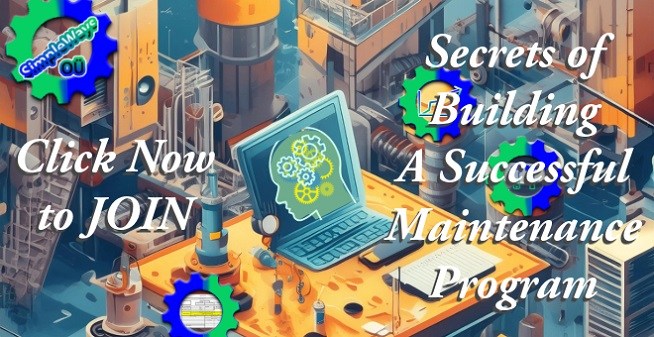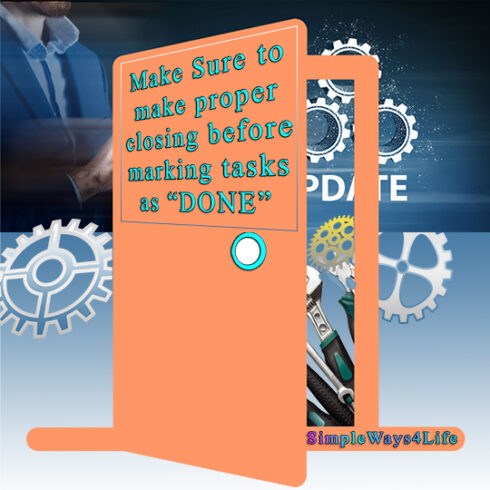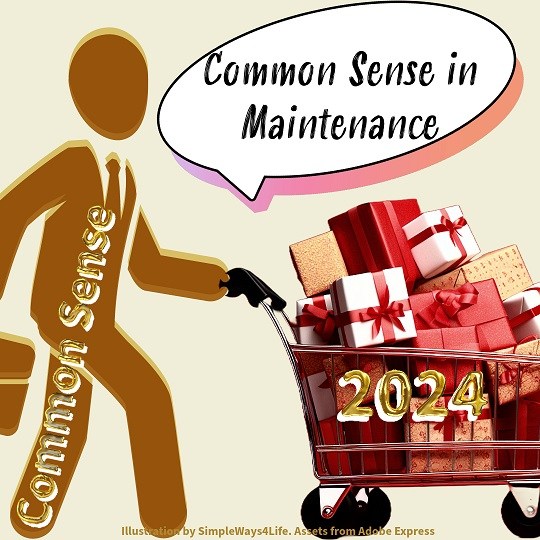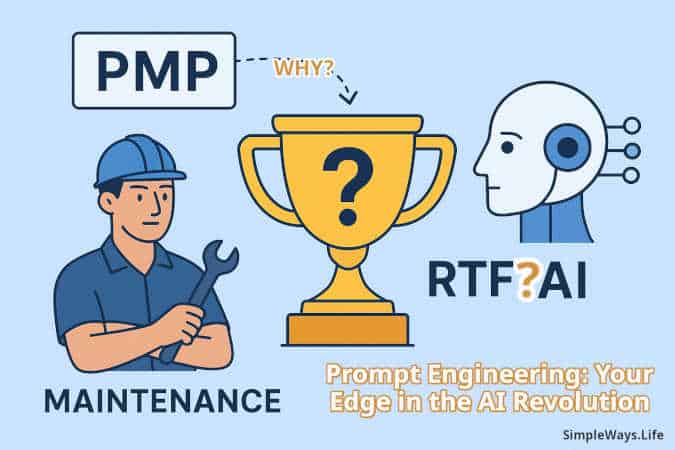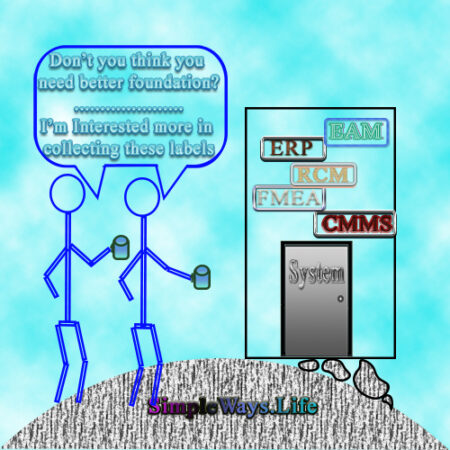Todays post about the practical steps to a Proactive Mindset and Maintenance is sneak peak from the book of the “Mindset Manifesto” that will be available online within the coming few weeks. If you are coming from the future, this book might be already published and you will find in our store: The Mindset Manifesto
Proactive Mindset
Proactiveness is taking initiative to anticipate and address potential issues or opportunities before they arise. It’s about being ahead of the curve and driving change. It is not about following a fixed routine blindly.
Predictiveness is using data and analysis to forecast future trends or outcomes. It’s about making educated guesses based on past patterns.
In essence, proactiveness is about action, while predictiveness is about foresight. A proactive person might use predictive data to anticipate a problem and then take steps to prevent it from occurring. If you use the data to anticipate what might come next but then took no action, then you missed the chance to be proactive.
By embracing proactive mindset we can enhance asset reliability, reduce costs, and achieve sustainable success in the long term. The journey to proactive mindset starts by understanding the proactive paradigm and selecting the best tools and strategies to make it a sustainable practice.

CUSTOMPRICE-TO2JAN26
Understanding Proactive Maintenance
Proactiveness is not about rushing into doing things. It is about doing the right things mindfully as early as it would add value. If you check the literal meaning at Cambridge dictionary it says: Proactiveness is taking action by causing change and not only reacting to change when it happens.
Similarly, Proactive maintenance is not simply about doing maintenance earlier—it’s about doing maintenance smarter. It combines technical expertise, analytical capabilities, and strategic thinking to maximize asset value while minimizing maintenance costs. This approach ensures that maintenance activities directly contribute to organizational success through improved reliability, reduced costs, and optimized performance. It is better with examples. So, let’s see one.

CUSTOMPRICE-TO2JAN26
Practical Scenario: Rotating Equipment
Consider a critical pump in a process plant: Critical here is important because it justifies the effort and time. In other words, the efforts are feasible as Reliability says. In more clear terms: The cost of proactively tracking this pump is less than the cost of lost production time and/or the cost of the pump
Traditional Preventive Approach:
- Replace bearings every 12 months regardless of condition
- Perform monthly vibration readings
- React to increased vibration by planning bearing replacement
Proactive Approach:
- Monitor multiple parameters (vibration, temperature, power consumption, flow rates)
- Analyze oil samples for bearing wear particles
- Track operational context (process conditions, upstream/downstream effects)
Noticed slight increase in power consumption and minor temperature variations. Investigation found misalignment developing due to pipe stress. Addressed pipe support issues before bearing damage occurs. And, documented the case for future learning
This example demonstrates how proactive maintenance works:
- Identifies underlying causes (pipe stress) rather than just symptoms (vibration)
- Prevents damage rather than replacing components
- Saves costs by addressing minor issues before major repairs are needed
- Creates learning opportunities for future improvements
Proactive maintenance is a strategic approach to asset management that emphasizes mindful prevention over reaction. It involves anticipating and addressing potential issues before they escalate into costly failures, thereby maximizing asset reliability and performance. Maintenance adds value by assuring enough uptime for production without breaking the bank. By focusing on proactive measures, organizations can minimize downtime, reduce maintenance costs, and extend the lifespan of critical assets.

CUSTOMPRICE-TO2JAN26
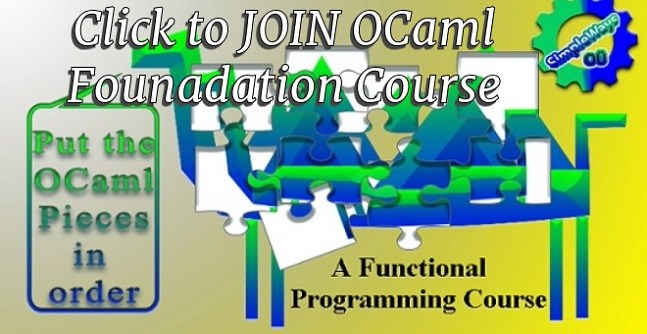
CUSTOMPRICE-TO2JAN26
Value Creation Through Proactive Mindset / Maintenance
Proactive maintenance creates value by:
Optimizing Asset Life Cycle
- Extending equipment life without excessive maintenance
- Reducing the total cost of ownership
- Maintaining optimal performance levels
Enhancing Production Reliability
- Minimizing unexpected downtime
- Improving product quality through stable equipment performance
- Supporting consistent production schedules
Managing Resources Effectively
- Focusing maintenance efforts where they add most value
- Reducing emergency maintenance requirements
- Optimizing maintenance inventory levels
The Balance Point
The key to successful proactive maintenance lies in finding the optimal balance between:
- Too much maintenance (wasteful spending, unnecessary interventions)
- Too little maintenance (increased risk of failure, reduced reliability)
- Just right (maximum value creation through targeted interventions)
This balance is achieved through:
- Data-driven decision making (Even based on simple sheets)
- Experience-based judgment (Build/Share the local experience )
- Understanding of business objectives (Where is the focus)
- Clear cost-benefit analysis (Benefit=saving > cost)
- Continuous evaluation and adjustment (Give time to reflect back, it is part of work not only doing wrench-time)

CUSTOMPRICE-TO2JAN26
Cultivating a Proactive Mindset: From Concept to Culture
Cultivating a proactive maintenance mindset is a journey that requires commitment, patience, and consistent effort. Success comes from creating an environment where every team member feels empowered and motivated to contribute to equipment reliability. When properly implemented, this cultural transformation leads to improved performance, reduced costs, and enhanced job satisfaction. That’s why we need to understand the Cultural Shift needed for implanting Proactive mindset
The transformation from reactive to proactive mindsets requires more than just new procedures or technologies—it demands a fundamental shift in organizational culture. This shift involves changing how every team member thinks about and approaches maintenance. Therefore, we shall demystify the key elements of a Proactive Maintenance/Mindset Culture in brief sentences that clearly describes how it looks like when Proactive Mindset is established in the workplace:
Employee Empowerment and Ownership
From Passive to Active:
- Traditional: “It’s not my job to worry about maintenance”
- Proactive: “I am responsible for the health of my equipment”
Decision-Making Authority:
- Operators empowered to stop equipment if they notice anomalies
- Maintenance technicians authorized to investigate hunches
- Teams encouraged proposing improvements
Personal Connection:
- Developing a sense of equipment “ownership”
- Taking pride in asset performance
- Celebrating proactive catches and interventions

CUSTOMPRICE-TO2JAN26
Communication and Collaboration
Open Dialogue:
- Regular forums for sharing observations
- Cross-functional team meetings
- Clear reporting channels for concerns
Knowledge Sharing:
- Documentation of lessons learned
- Peer-to-peer training sessions
- Success story sharing
Breaking Down Silos:
- Integration between operations and maintenance
- Collaboration between shifts
- Partnership with engineering and reliability teams
Continuous Learning and Development
Technical Skills:
- Understanding equipment fundamentals
- Learning about failure modes
- Mastering diagnostic tools
Soft Skills:
- Observation techniques (Inspection visual-audible, attention to details, critical thinking, awareness)
- Problem-solving methodologies (RCA, FMEA, 5-Why, PDCA)
- Communication skills (Active listening, non-verbal cues, empathy, feedback handling, clear messaging)
System Thinking:
- Understanding process interactions
- Recognizing patterns
- Anticipating consequences

CUSTOMPRICE-TO2JAN26
Practical Implementation Strategies for Proactive Mindset
Leadership Actions
Visible Commitment:
- Regular gemba walks with teams (to go to the actual place where the work is done)
- Participation in maintenance activities (Be there while they do the job)
- Recognition of proactive efforts (See it, pinpoint to it, Say it loud)
Resource Allocation:
- Time for investigation and learning
- Tools and technology support (Which tools can fit in within the team capabilities and organization vision)
- Training and development opportunities (Address problems and gaps not as gifts)
Performance Management:
- Metrics that encourage proactive behavior (Responsiveness Rate, validated early catches, training)
- Recognition systems for early catches
- Career paths that value maintenance excellence
Team Development
Training Programs (Based on actual individual needs):
- Basic equipment care
- Observation skills
- Problem-solving techniques
Mentorship:
- Pairing experienced and new staff
- Cross-training opportunities
- Knowledge transfer sessions
Team Building:
- Collaborative problem-solving exercises
- Shared goals and objectives
- Trust-building activities

CUSTOMPRICE-TO2JAN26

CUSTOMPRICE-TO2JAN26
Systems and Processes
Reporting Mechanisms:
- Easy-to-use observation reporting tools
- Quick response to reported issues
- Feedback loops on actions taken
Decision Support:
- Clear guidelines for action
- Risk assessment tools
- Escalation procedures
Documentation:
- Knowledge management systems
- Best practice sharing
- Lesson learned database
In Conclusion,
Embracing a proactive maintenance mindset is essential for organizations looking to optimize their asset management strategies and minimize downtime. By prioritizing predictive maintenance techniques, you can rip the best of the proactive paradigm.
The Path Forward
The future of maintenance lies in a balanced, strategic approach that:
- Builds upon existing preventive and on-condition maintenance practices
- Gradually incorporates more predictive and proactive elements
- Leverages technology to enhance, not replace, human expertise
- Fosters a culture of proactivity and continuous improvement across the organization
- Remains flexible and adaptable to new technologies and methodologies
If you feel you need help with any of these ideas we discussed, request a Management Consultancy or Coaching Services From our Store

